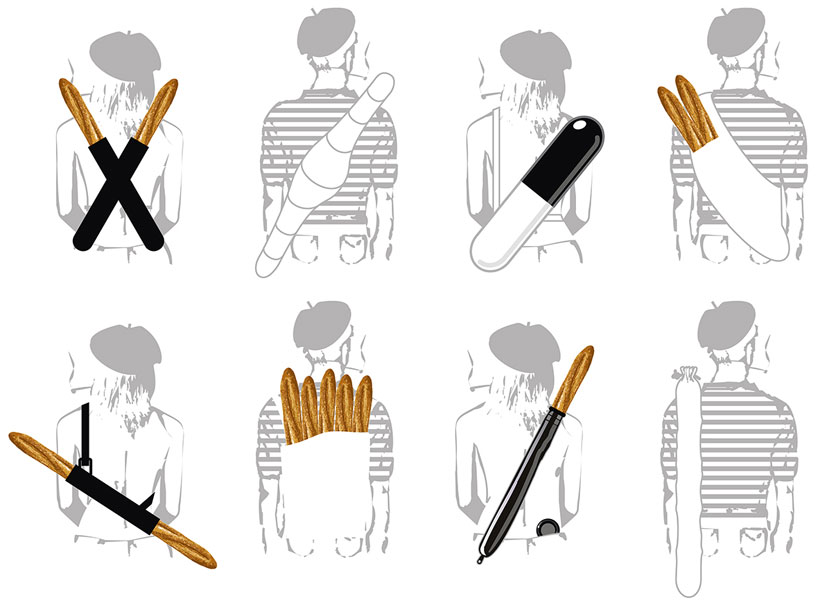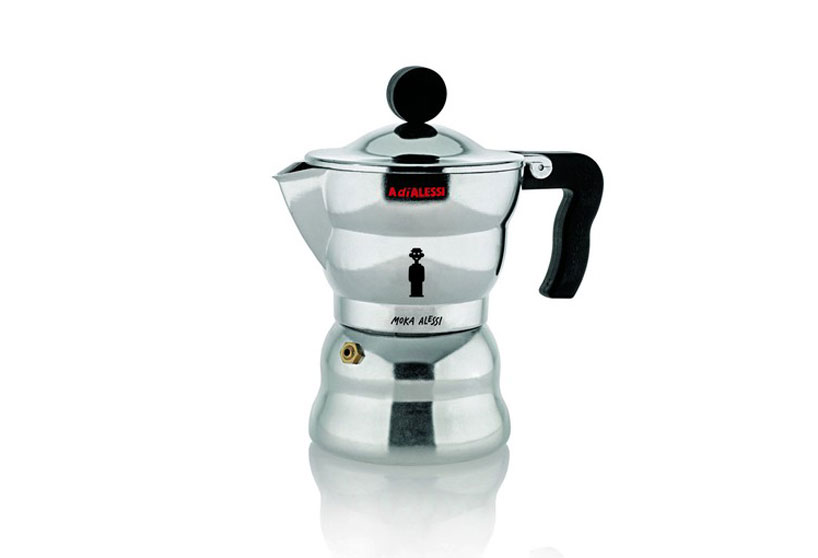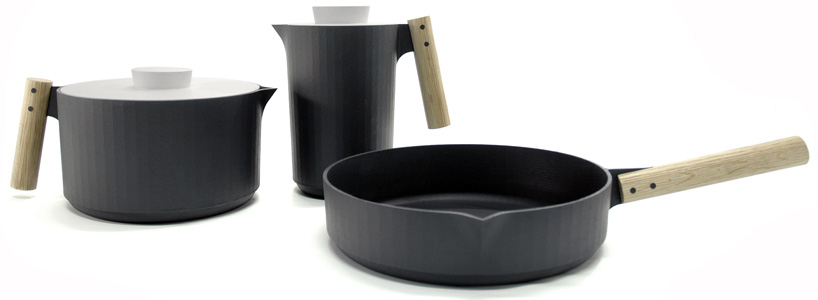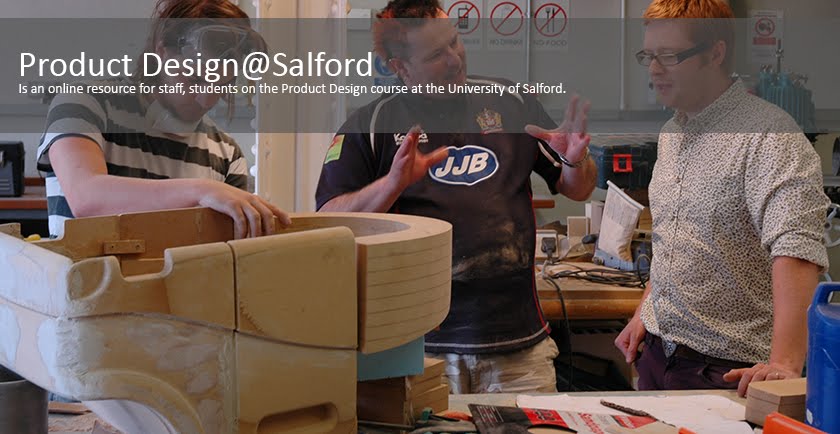Thursday, January 27, 2011
L5 notice _ Brewery tour
A bag for barkeeps

Every time you turn around they've opened a new cocktail bar a few blocks away from you. I realize this is not a popular view, but I hate cocktails. Gin, whisky and vodka distilleries have spent hundreds of years getting their formulas right, then we go and muck it up by adding pomegranate juice and Maraschino cherries? No thank you. Cocktails were popular and necessary during Prohibition, when all we had was vile-tasting bathtub moonshine that needed masking with fruit juice so you wouldn't realize it was making you go blind.
Anyways I used to say there's a blog for everything, now it seems there's a bag for everything. Specialty bag company Moore & Giles has just released the Meehan Utility Bag & Bar Rollup, a traveling bag for mixologists so they can travel from bar to bar peddling their evil alchemical wares.
It only costs $740 and you can carry it in your right hand. In your left hand you can carry the Hell in a Handbasket this country's going to. Bottoms up, everyone!
The Wonder of Craft
The Wonder of Craft: "
I really enjoy watching people who are superb at their craft: I like watching them while they are practicing their craft, and I like hearing them talking about it. The various "How It's Made" type shows are one window into this for mass-manufactured items, but they are too depersonalized and miss the stories about the people doing the making; even on a manufacturing line, people are not robots, no matter how much that might be desirable from an efficiency standpoint. But often what you find is that a lot of mass manufacturing also requires a lot of skill and implicit knowledge, knowing how to make small adjustments and deal with unexpected contingencies on the fly, which can only be gained with experience over time. Finding out how skillful people do this and watching them do it with apparent ease is fantastic.
Activities with performance aspects lend themselves to this easily. Cooking for example: the final omelette-making scene in the movie Big Night, or watching Julia Child and Jacques Pépin riff off each other in the PBS series Cooking with Jacques and Julia.
I also loved the opening scene in the Pierce Brosnan anti-hero movie The Tailor of Panama, in which Geoffrey Rush plays a tailor of men's clothing. The movie opens with him in his workshop marking and cutting a bolt of cloth for a suit, and he looks so natural at it that you immediately believe him as a tailor, and it's a great little vignette showing how a flat piece of cloth gets transformed into a full piece of clothing. More illustrative than anything on Project Runway.
Music has been a rich vein for how-its-made/behind the scenes examinations. Here are a few of my favorites available for viewing/listening:
Note by Note
Steinway pianos are probably the most complicated mass-produced (relatively) products still made entirely by hand. Note by Note is a documentary available on DVD that goes inside this process in a truly enthralling way, following the creation of a single grand piano (number L1037) through its whole year-long gestation period. Aside from things like casting of the metal frame, all the work is done by hand by craftspeople who've been at it for decades, using a formula passed down through the generations.
There are some revelations: each piano has its own personality despite being made "identically" and musicians will bond with one piano and hate the identical-looking one sitting right next to it; and the people making the pianos don't really understand why the construction process works. Therefore they can't change what they do (e.g. to make it cheaper, more efficient) because the process is an organic outgrowth of experimentation that is now lost in the mists of time. They can't change it because they don't know how it will break.
It Might Get Loud
From the instrument itself we now go to the playing of instruments. This documentary (available on Netflix and elsewhere) brings together U2's The Edge, Led Zeppelin's Jimmy Page, and The White Stripes' Jack White, three distinctive guitar heroes, to talk about their relationship with the electric guitar. If you can get past the obvious hero worship (to the movie's credit, not as heavy handed as it could have been) you get some really great insights and nuggets.
Jack White in particular is highly quotable. For example he says "Ease of use is a disease that you have to fight in every creative field," arguing that you need to have an antogonistic relationship with your tools. Your tools should push back against you, and you need to push them to do things that they weren't meant to. He's all about imposing limitations in order to focus and spur creativity. For example the White Stripes' minimalist palette of red, white and black both forces them to be inventive with how to use these colors, as well as keeping them focused by getting caught up in thinking about their identity too much. Even on stage, White is restless: "If it takes me three steps to get from the microphone to the keyboard, I'll move the keyboard further away so I have to take four steps." "I want it to be a struggle," he concludes.
The Making of Good Vibrations
For the last muscial example we have how instruments are turned into a song, specifically the making of Brian Wilson's iconic song Good Vibrations for The Beach Boys. (This page has the text of the story, but make sure to click on the "Listen to the Story" link at top left of page for the original broadcast piece so you get the voiceover and music together.) A dramatically different song from anything The Beach Boys had done before, and even more different from anything other pop artists were doing at the time, it also helped usher in a new approach to studio recording, with a producer (in this case Wilson) splicing together individual tracks and snippets recorded in different studios and different times with different musicians.
Listening to it you can tell it's a complex song, but listening to the history of the song and how it was constructed by Mike Boylan, of NPR's All Songs Considered, you don't really realize just how complicated it is. But, as is always true of the best craftsmanship, the end result appears effortless, seamless and uncontrived.
What comes through in all these examples is that craft requires obsessiveness: attention detail, never being satisfied, hard-earned time learning the craft.
Simplified mobile phone just makes & receives calls
Back in 2006 we thought the Jitterbug looked like a simple phone. Then we saw John's Phone, which just launched last year. Billed as “the world's most simple phone,” John's Phone may indeed be just that, with features that focus exclusively — really exclusively — on making and receiving calls.
Designed by Dutch creative agency John Doe Amsterdam, John's Phone comes unlocked and it includes no frills. Features such as a camera, text messaging capabilities and numerous ringtones are not to be found on the device, which is designed instead to require no explanation. Rather, John’s Phone features calling capabilities, large keys, volume control, locking capabilities, an earphone for hands-free use and a speed-dial function — which makes it particularly suitable for children, the company says. On the back of the device, meanwhile, is a flap containing an address book and a pen — features John Doe figures might appeal to older users. John's Phone is available in five colors, and it's compatible with any type of SIM card around the world. It also supports global roaming, except on the 3G networks in South Korea and Japan. With a standby time of more than three weeks, John's Phone is priced at EUR 79.95 for all colors except white, which is EUR 69.95.
Given the complexity of most technology today, it should be no surprise that simplification should be a potent counter-trend. Whether for senior citizens, kids, or those just tired of feature overkill, how could you simplify things for the niche of your choice? (Related: Remote computer support for senior citizens — Personal 'cloud phone' service for rural users without a handset — Modular mobile phone can slip into new roles.)
Website: www.johnsphones.com
Contact: www.johnsphones.com/support/contact/
Spotted by: Karin Thomas
neil poulton: bag-ette

'bag-ette' is a fun way to transport your freshly baked baguette, without falling off your bike!
read more"
alessandro mendini: moka alessi

alessandro mendini reinterprets bialetti's classic 'moka express' for alessi.
read more"
L5 notice _ Brewery tour
Wednesday, January 26, 2011
Core77's "Sustainable Refrainables" Poster Design Competition Jury Winner!


Photo: Jessica Watson
Congratulations to Mariam Melkumyan who was announced as the jury winner by Core77's Allan Chochinvov for her entry Start Acting at Compostmodern in San Francisco on the weekend. She joins the other winners as voted by the community with a copy of Adobe' CS5 Master Collection and bonus $500 cash.
(more...)"
Monday, January 24, 2011
"Turnstyle": Turntable Reinterpretation by R.D. Silva

Stripping products down to bare essentials can become something of an obsession for modern day designers. Only last month we saw legendary product reinterpreter Daniel Weil's 'Clock for an Architect,' a tribute to deconstruction and inner-workings.
Flying the flag for minimalist rearrangments this year is a designer going by the name of R.D. Silva—taking aim this time at the record player. Although arguably not as minimal as Charles Pyott's 'Linos' concept, the skeletal copper 'Turnstyle' certainly has some charm. Top marks for actually managing to make the thing too.


(Via Zeutch)
(more...)"Thursday, January 20, 2011
IHHS 2011 Preview
The International Home and Housewares Show hosted a preview highlighting some of the trends and products we can look forward to seeing this year in Chicago. Besides the usual mix of ergonomic kitchen gadgets, new technologies in home appliances, and green solutions for everyday tasks, we saw some interesting trends in the area of product design and usability. In the kitchen storage category, stackability and space saving design were keys to improving everything from Microplane graters to collapsible nesting bowls and stackable water bottles. My favorite lunchbox product, the Glasslock line of airtight, leakproof and stackable food storage containers now comes in an ovenproof version from Snapware. Ceramic knives continue to be on trend with companies like Cuisinart throwing their hat into the ring at a friendly price point with a break resistant technology that's new to the market.
Check out some more interesting products from this year's IHHS 2011 preview and stay tuned for some fun coverage at the upcoming March show.
(more...)"
angell wyller aarseth: handle me

the heavy, textured cast iron and wood cookware references the simplicity of tradition while drawing our fragmented attention back to the physical and solid.
read more"
Wednesday, January 19, 2011
Virtual job-hunting: Technology fills situations vacant
martyn_evans: RT @frogdesign: Things Babies Born in 2011 Will Never Know. http://j.mp/ieWH2c
martyn_evans: RT @fastcodesign: Wowsa, get a load of this WikiLeaks bunker... looks like it came straight from the mind of Ian Fleming: http://ow.ly/3G7FE
The Power of New Energy Products

New energy products are teaching consumers how to take control of their power.
How different our cities and towns must have been before the electric streetlight. Gas lamps—and before that torches—had to be lit and re-lit on a nightly basis. This first “grid” was laborious, slow, and disconnected. Electricity changed all that. The enormous industrial effort that put in place an infrastructure capable of moving electrons, with their instant, always-on quality, gave us a mighty kick from the 19th to the 20th century.
This century is bringing change, too. It’s coming not from the power companies, but from you—the energy consumer. If the first generation of electricity was all about industrial power, then ours will be about consumer power. And if consumer demand grows big enough and fast enough, then it has the potential to pull utilities, regulators, and corporations along with it.
This next wave isn’t on the horizon. It’s here now. Consumers have a wealth of energy products available on the market. They have names like Nucleus, Leaf, and Volt. They come from companies like Tendril, Blink, and Xanboo. Just by owning these products, you will, over the course of your life, reduce your energy consumption enough to save a lot of cash and improve your outlook on the future. Their wide adoption (like electric lights before them) is virtually certain, as money and security provide the necessary motivation to ignite real and widespread change.
So why is it taking so long?
It’s more a question of behavior than of technology. All new products, and the technologies they’re based on, come with a learning curve. If they didn’t, they wouldn’t be new. In some cases, like when the group of end users is small, the learning curve is steep (think airplane cockpits). But if we want to engender a global mainstream culture of efficient and sustainable energy use, then it’s up to designers—in collaboration with inventors, entrepreneurs, and energy experts—to flatten the learning curves. By focusing on how a user actually behaves, and making products that are attractive enough to purchase, simple enough to use, and easy enough to keep using, we can put more choices—and more power—into consumers’ hands.
A good example of this behavior change is the adoption of electric vehicles. Replacing one combustion engine for an electric motor doesn’t change our perception of a car. But what’s under the hood is having a dramatic impact on our behavior. The Nissan Leaf, for example, the first mass-produced electric vehicle in the United States, introduces an interesting challenge—how to “refuel.” Charging stations, standardized now to work with any EV, do exist in markets where the Leaf is sold, but are not widespread enough to provide a worry-free driving experience. This “range anxiety” (the fear of being stranded with a dead battery with no place to recharge) is one of the biggest perceived barriers to EV adoption. Of course, with almost 100 miles on a full charge, the Leaf should work well for the 85 percent of us who drive between home, work, and the “third place” (mall, café, library). But on longer trips, drivers will need to seek out-of-the-way charging stations—something they aren’t used to doing.
Better Place, another company in the EV market, is rolling out a network of battery-switching stations (where it will take two minutes to “refuel”). But that approach is in its first phase and doesn’t address the problem of station density. So to help drivers adapt, designers have softened the learning curve by creating dashboard interfaces that direct a driver to nearby locations for charging, changing the route he or she takes but not the final destination. Designers are also adding cues for energy-efficient driving (i.e., heated seats, which are more efficient than whole-car heating), subscription services for charging your car wherever you go (like a mobile-phone roaming plan), and helping create offerings from retailers to lure consumers to EV parking spots (free coffee while you charge).
These behavior-based design techniques, and others like them, should be enough to conquer our anxiety and boost adoption.
You can read the full version of this article by frog's Executive Creative Director David Merkoski over at GOOD magazine.
Monday, January 17, 2011
martyn_evans: RT @IDSA: Why redesigns are so damn hard? (A contemplation): http://bit.ly/eNUGk3
martyn_evans: RT @thecoolhunter: What to Do When You Find Something Cool on the Internet: A Flowchart http://tiny.cc/4uu4v
martyn_evans: RT @IDSA: Ford wants to hire 750 product developers, engineers: http://bit.ly/hwmERv
martyn_evans: RT @_davelee: Manchester is ranked third in Europe on Twitter http://ht.ly/3E17a via @howdomedia
martyn_evans: RT @kevinmccull: The 2000s Were the Best Decade Ever? Development Optimist Charles Kenny (via @danielbenami) http://bit.ly/ikyGMz
Friday, January 14, 2011
Product development
Courtesy of the students best friend ‘dave’ I saw a re run of the gadget show which included a task of creating a new product from scratch, It showed the real world development of a product all be it kinda quickly which I found interesting easy viewing Witch I thought I’d share with y’all.
THANKS COLIN AMESBURY FOR THIS LINKWednesday, January 12, 2011
ideo: RT @colincolin: Nice1 Beau!! RT: @trincia: Nick+Beau are on Wired.com! http://j.mp/hGor5j
Crowdsourcing site actively manages the design process
Now that crowdsourcing has entered the mainstream as an approach for getting work done, quality is the new focus. Last year we saw Edge Amsterdam's answer to that concern in the form of an invitation-only crowd; now, Veeel is taking a different tack by closely managing the process from beginning to end.
Also based in Amsterdam, Veeel works with a pool of some 1,000 freelance designers to offer product development services for a variety of brands and corporations. Designers are classified into four categories, ranging from junior to specialist. And rather than simply offering a platform enabling clients to tap those crowds, the company itself plays a key role in the process. It explains: “We work together with our clients during all project phases. We present every step of progress during the whole process and implement input and know-how of internal production and marketing departments, making the product innovation a joint effort. Veeel selects the best experts and specialists for the benefit of the project and by doing so, a creative, efficient process is guaranteed, including the best result in the end.”
Guaranteed results tend to come as music to most clients' ears, and Philips, Unilever and PWC are all among those that have already benefited. (Related: Crowdsourced dream cars inspired by destinations — Brainstorming service uses Twitter to crowdsource ideas overnight — Crowdsourcing of graphic design goes local.)
Website: www.veeel.com
Contact: mail@veeel.com
Spotted by: Karin Thomas



